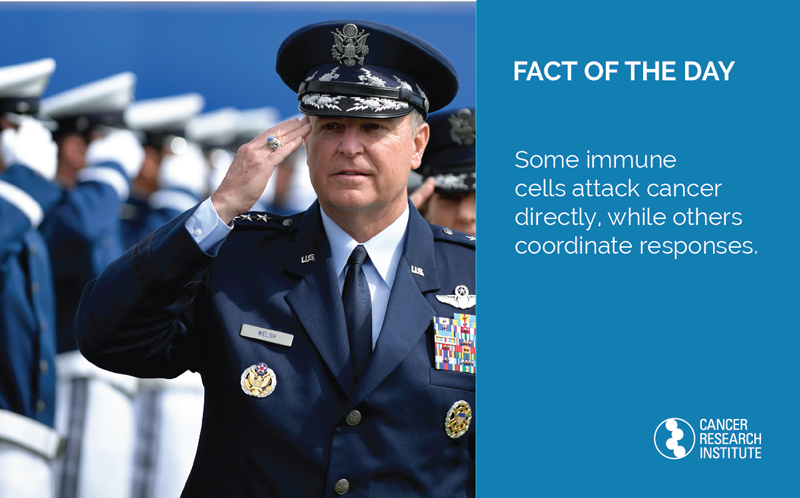
Some immune cells attack cancer directly, while others help coordinate the response.
Just like any well-trained force, our immune cells divide the labor, too.
Some, like T cells, attack tumors directly. Others, such as dendritic cells (DCs), orchestrate attacks from behind the scenes. By gathering intelligence about a tumor’s markers (antigens), DCs can then educate other immune what the tumor “looks like.”
This “education,” which often takes place in the lymph nodes, occurs through a system of surface receptors called MHC (major histocompatibility complex) that present tumor antigens. The MHC/antigen system is what gives the adaptive immune system the ability to recognize and respond to threats, including cancer and infection. (The MHC2 molecule was discovered by Peter Cresswell, Ph.D. , while Emil R. Unanue, M.D., and Rolf M. Zinkernagel, M.D., Ph.D., also made major contributions to our understanding of MHC activity.)
Because of this ability to coordinate anti-tumor responses, DCs—which were discovered by Ralph Steinmann, M.D.—have been incorporated into several immunotherapy approaches including Sipuleucel-T, an FDA-approved prostate cancer vaccine that uses a patient’s own DCs.
The following CRI-funded scientists are investigating the factors that influence the MHC/antigen system and adaptive immune responses, as well as evaluating novel DC-based immunotherapy approaches for patients:
- Niroshana Anandasabapathy, M.D., Ph.D.
- Najla Arshad, Ph.D.
- Nina Bhardwaj, M.D., Ph.D.
- Joshua Brody, M.D.
- Hsin Chen, Ph.D.
- Juan R. Cubillos-Ruiz, Ph.D.
- Amanda Lund, Ph.D.
- Ferry A. Ossendorp, Ph.D.
Image credit: Creative Commons via U.S. Air Force Live (The Official Blog of the U.S. Air Force)